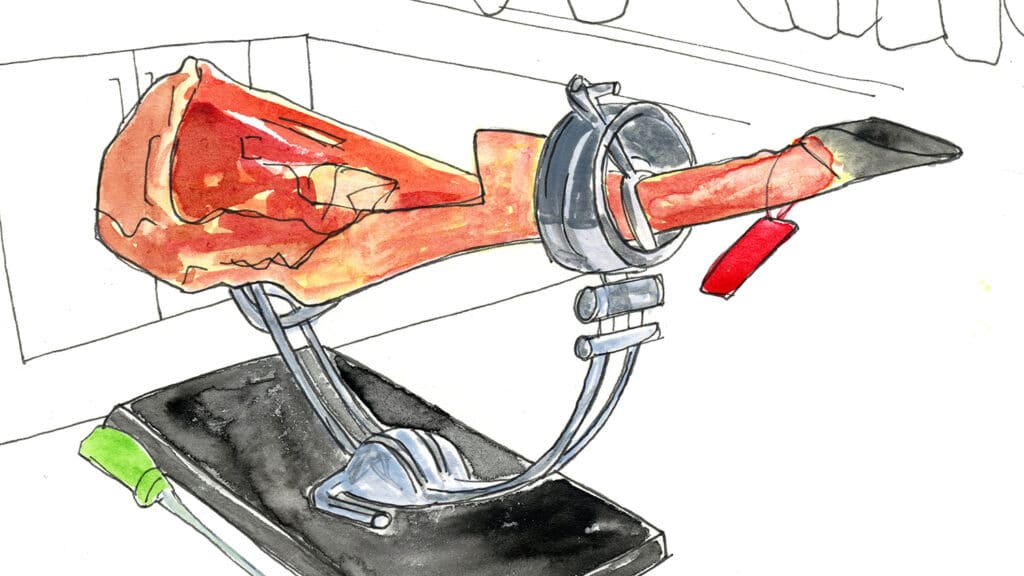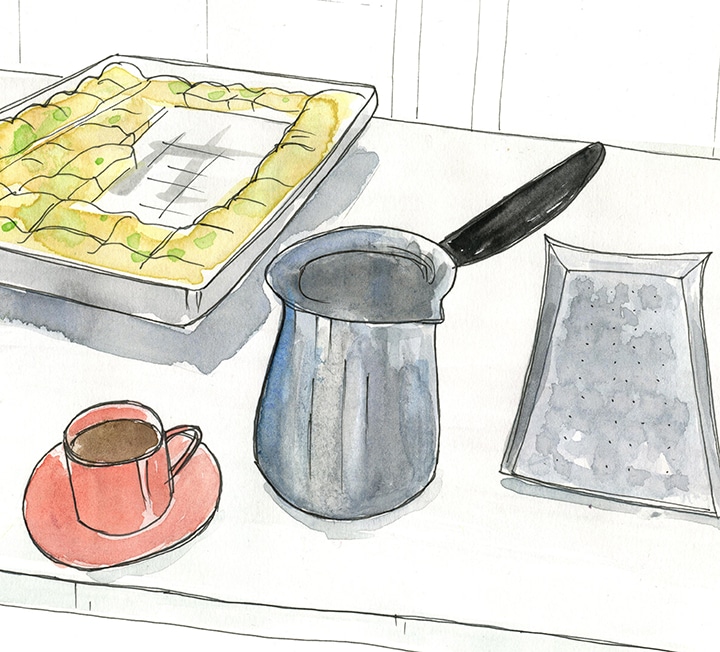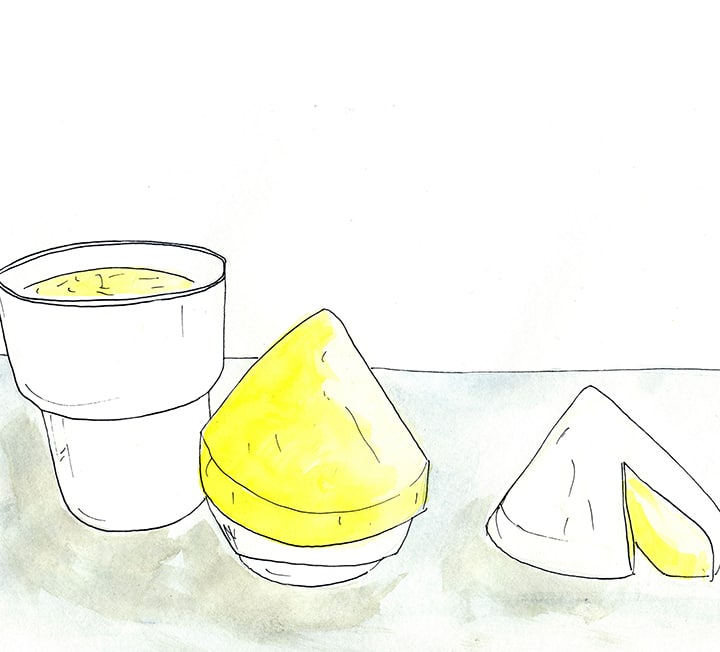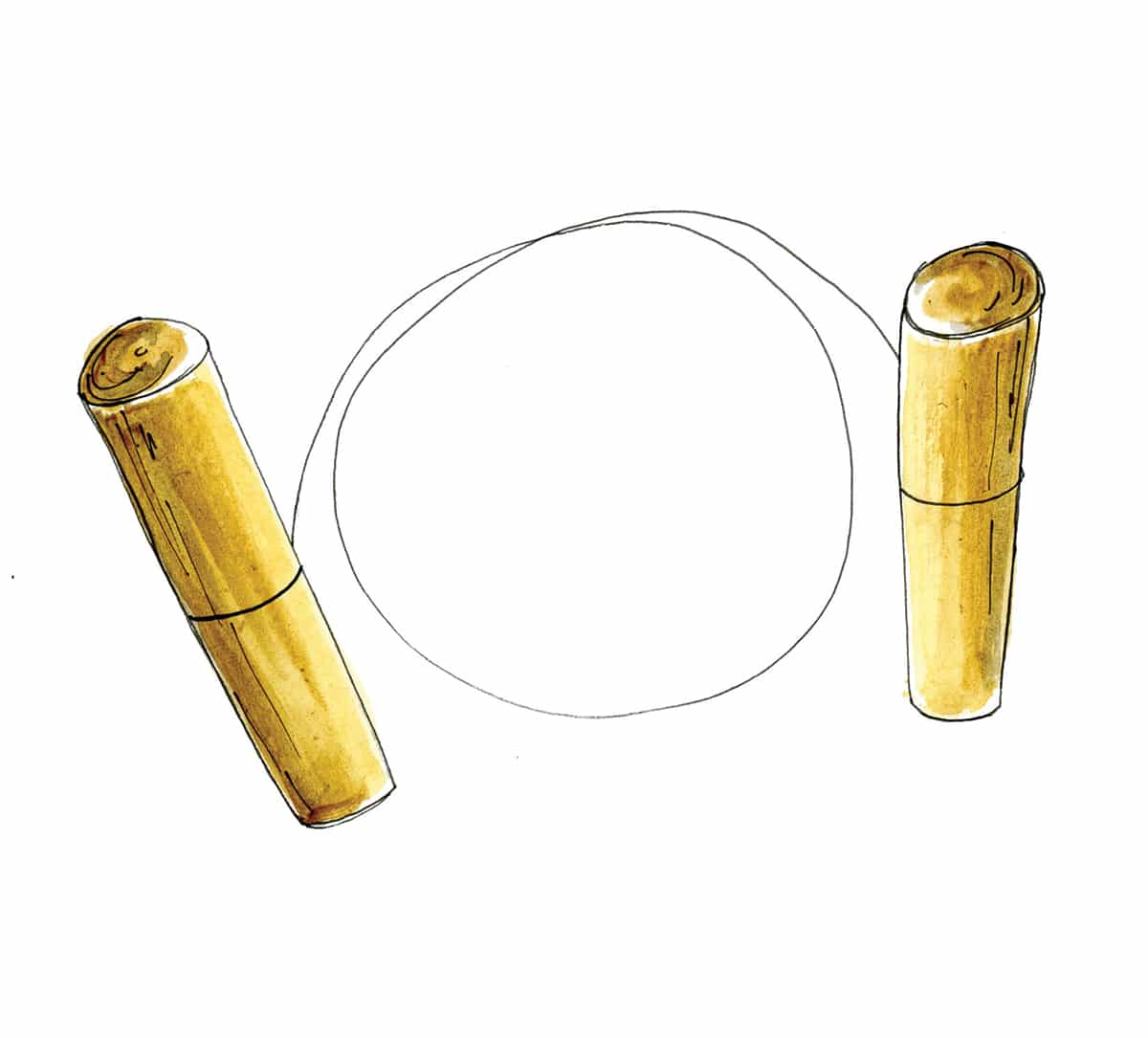Tools of the trade: the jamón stand
James Robinson of Brindisa on one of the essential tools of his business


“I PERSONALLY THINK THIS IS A CRAFT THAT CAN’T BE LEARNED BY MOST PEOPLE – IT TAKES EXTREME DEXTERITY”
Interview & illustration: Ed Smith
The finest jamónes are those that fall under the four formally classified grades of jamón Ibérico, which is what we focus on at Brindisa. You’ll see a mass of legs hanging in our temperature-controlled chamber, with one or two of our skilled carvers each working on a leg throughout the day.
Jamón Ibérico is made from pigs that are native to the Iberian peninsula. Diet, breed and living conditions determine which grade of jamón their meat will be. Each leg that we import will have been aged between 18 months and four years. To do justice to the time, effort and knowledge needed to produce the meat, the carver has to be well skilled and have the best tools: a sharp, flexible knife, and a quality stand to hold the ham still.
The simplest and most traditional form of ham stand is basically just a clamp, which fixes a ham in place and allows you to carve without having to hold the meat steady. More sophisticated stands have an adjustable, rotating collar. This allows the carver to turn the ham through 360 degrees as they work, making both the preparation – trimming off the skin and fat – and the carving much easier. It allows the carver to be dexterous and skilled. It’s safer too, as they can always work at the optimum angle for their knife.
The stands we use at Borough Market also allow us to move the jamónes forward and back and from side to side, which means people of different heights can work in comfort. If they’re standing there for several hours, that’s really important.
It will take a skilled carver about two to two-and-a-half hours to carve a whole jamón. I personally think it’s a craft that can’t be learned by most – it takes extreme dexterity. And maybe there’s something of the art in it too. Certainly my Spanish colleagues think so – the best of them would say they feel a real connection with the meat.
Our guys are true experts. They carve the meat into beautifully thin slices and present them in intricate concentric circles while they work; it looks amazing and because it’s been sliced so skillfully, tastes incredible too. The better the meat is carved, the better it is to eat.


